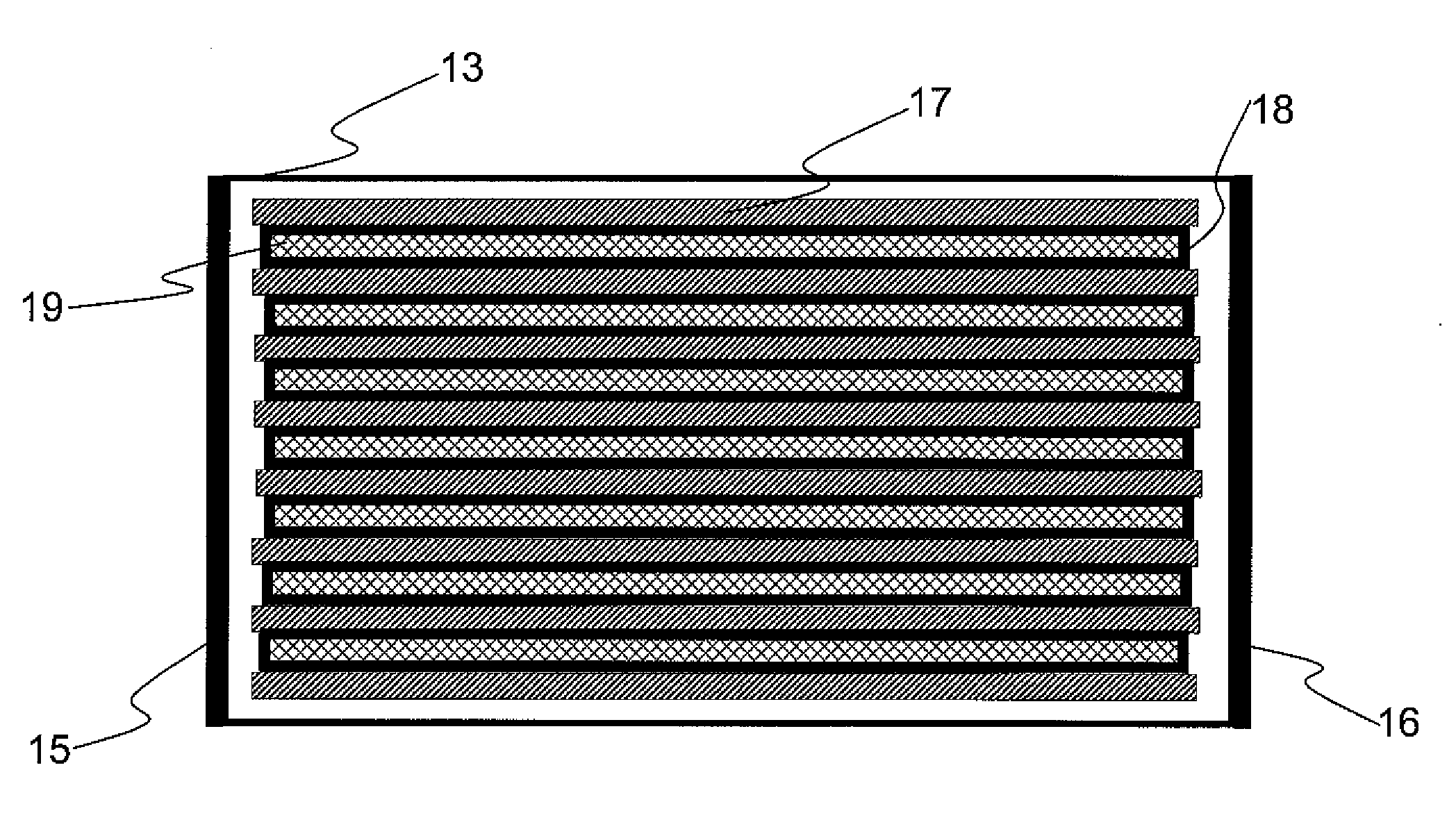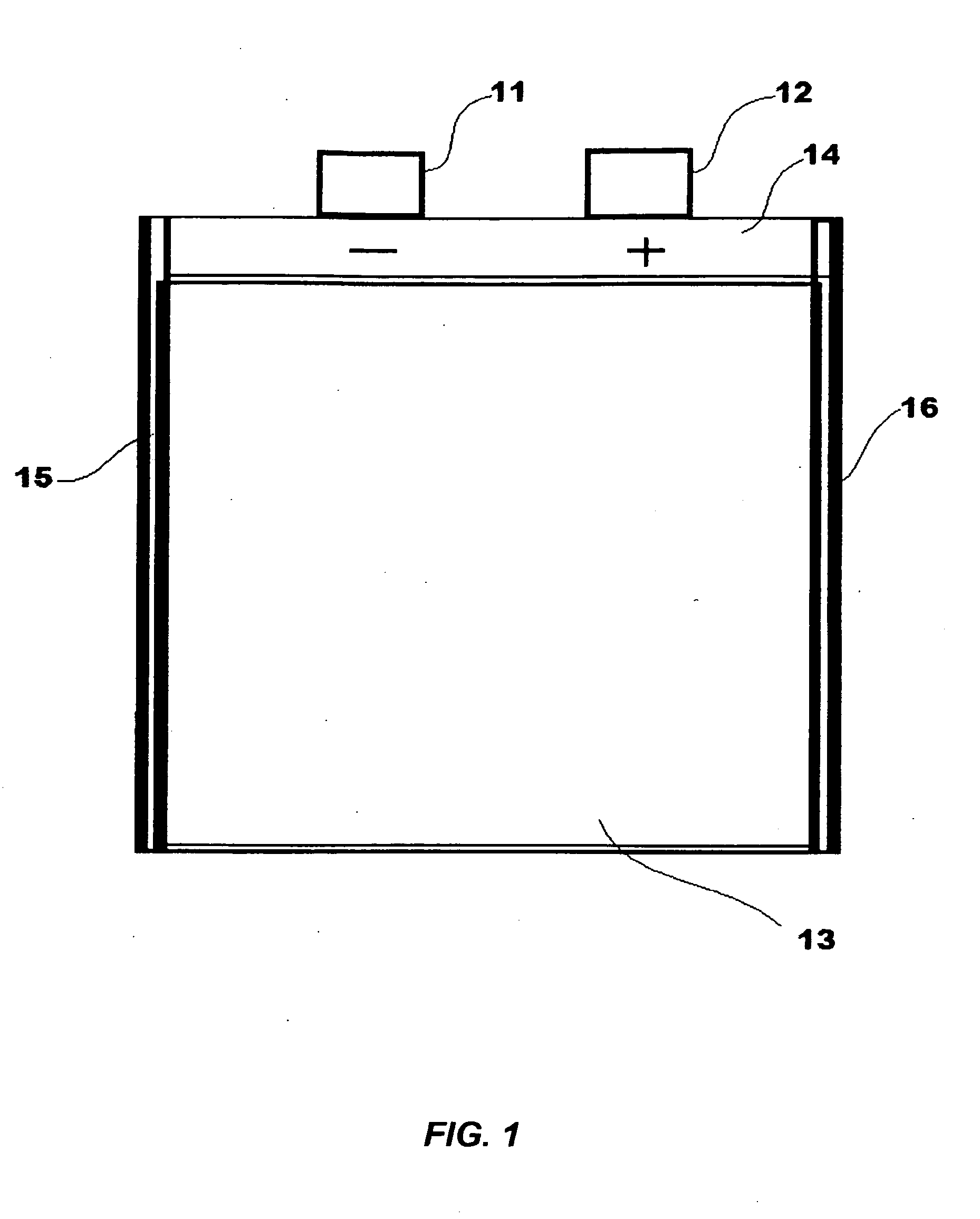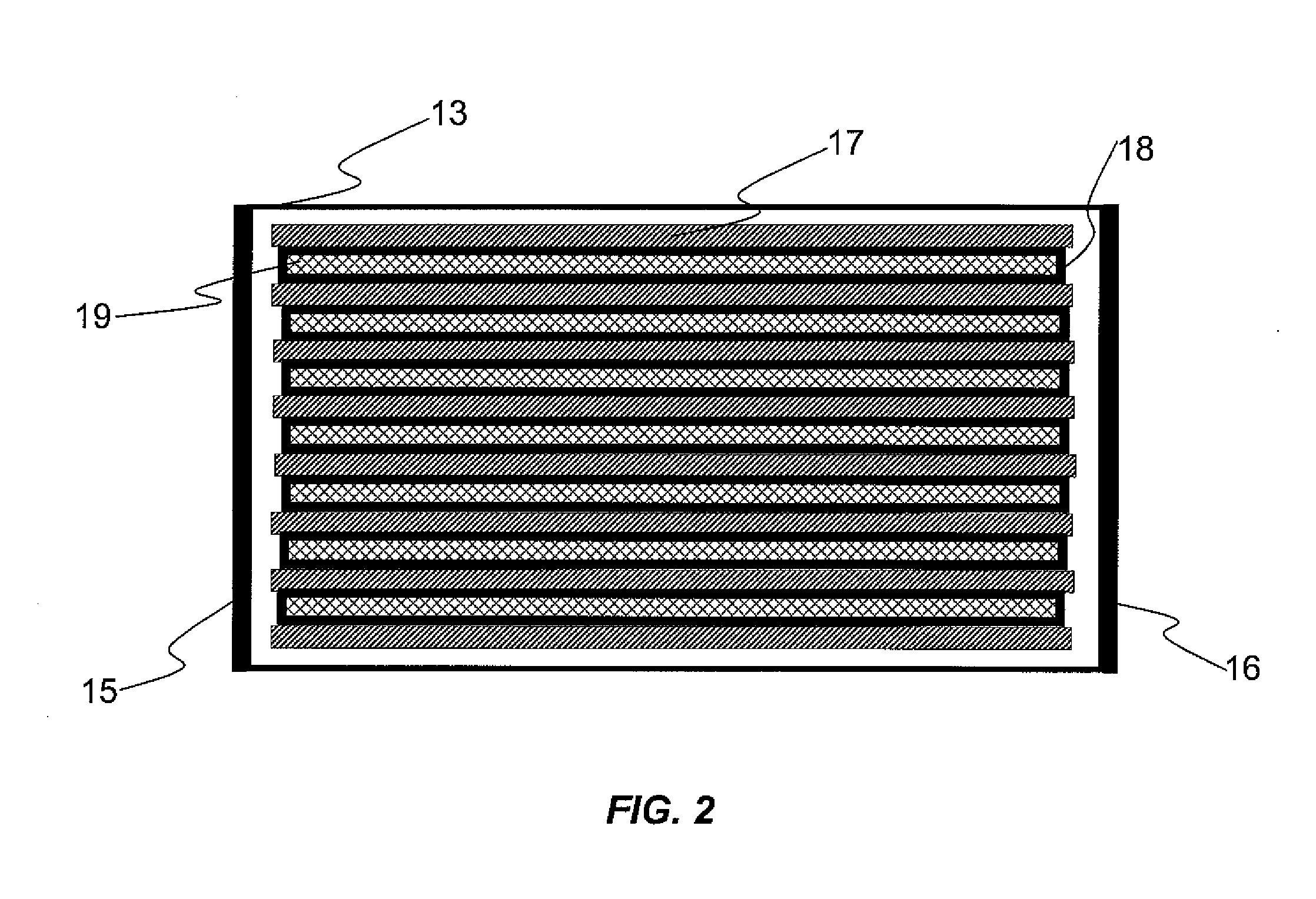Large format lithium-ion cell and its uses thereof
- Summary
- Abstract
- Description
- Claims
- Application Information
AI Technical Summary
Benefits of technology
Problems solved by technology
Method used
Image
Examples
example 1
Cell Preparation and Testing
[0035]A large format prismatic lithium-ion cell was assembled using a graphite negative electrode, a LiCoO2 positive electrode, and a bondable separator membrane. Into the assembled battery cell case, was then injected an electrolyte. Both negative and positive electrodes were conventional liquid lithium-ion battery electrodes, namely negative and positive materials are double-side coated onto copper and aluminum foil respectively, the carbon negative electrode containing about 90% graphite active material, the LiCoO2 positive electrode containing about 91% active material.
[0036]A large format prismatic lithium-ion cell, Cell No. E-01, was assembled as shown in FIG. 1 and FIG. 2 by, a) wrapping seven pieces positive electrode 19 having a size of 90 mm by 99 mm with a bondable separator membrane 18 with a dimension of 94 mm by 202 mm, b) stacking these seven pieces separator wrapped positive electrodes and eight pieces negative electrodes 17 having a size ...
examples 2-5
[0043]As summarized in Table 3, four large format prismatic lithium-ion cells, Cell Nos. E-02 through E-05, were prepared in the same manner as described in Example 1 except using one additional pair of electrodes and also slightly larger electrodes.
[0044]Cells Nos. E-02 through E-05 were assembled with 8 units / pairs of basic cells: 8 double-side coated positive electrode 91 mm by 100 mm, 7 double-side coated negative electrodes 94 mm by 103 mm, and 2 single-side coated negative electrodes which were assembled on the top and bottom of the cell.
[0045]Testing results of these four cells are summarized in Table 3 including discharge capacity, weight of cells, specific energy, and energy density.
[0046]All these fours cells have the same external dimension of 3.3 (Thickness)×105 (Width)×100 mm (Length), namely the cells with a footprint of about 4 by 4 inches. They delivered a capacity of about 4.8 Ah when discharged at a constant current of 1,000 mA to a cut-off voltage of 2.5V.
[0047]FI...
example 6
[0049]Sixteen large format prismatic lithium-ion cells were made in the same manner as described in Examples 2-5. Then these sixteen cells were used to assemble one battery pack, No. E-06.
[0050]The battery pack consists of 2 sections or modules. Each section was assembled using 8 cells in the configuration of 4S2P, namely 4 cells in series, and the resulting 2 units made of 4 cells in series were then assembled in parallel.
[0051]The battery pack (No. E-06) weighs about 1.5 kg, and has an external dimension of 112.5×127.0×63.0 mm.
[0052]FIG. 4 shows the charge (solid line) and discharge profiles (line with circle) of one section (Section I) of the battery. Each section was made of 8 cells in the configuration of 4S2P. This section of the battery was charged at a constant current of 2.0 A up to 16.5V, and then charged continuously under constant voltage until the current dropped to below 0.3 A. It was then discharged at a constant current of 2.0 A down to a cut-...
PUM
| Property | Measurement | Unit |
|---|---|---|
| Temperature | aaaaa | aaaaa |
| Length | aaaaa | aaaaa |
| Length | aaaaa | aaaaa |
Abstract
Description
Claims
Application Information
 Login to View More
Login to View More - R&D
- Intellectual Property
- Life Sciences
- Materials
- Tech Scout
- Unparalleled Data Quality
- Higher Quality Content
- 60% Fewer Hallucinations
Browse by: Latest US Patents, China's latest patents, Technical Efficacy Thesaurus, Application Domain, Technology Topic, Popular Technical Reports.
© 2025 PatSnap. All rights reserved.Legal|Privacy policy|Modern Slavery Act Transparency Statement|Sitemap|About US| Contact US: help@patsnap.com



